From the Athens News:
Athletics officials explain details of huge budget deficit
Thursday, February 8th, 2007
Since the day in late January when they announced four varsity sports teams would be cut, Ohio University Athletics officials have said Title IX gender-equity law and a burgeoning debt within the athletics department forced their hand.
But what are the actual spending numbers and trends within the program, how did a $4.8 million dollar debt come about in just a few years, what did the football team's bowl game cost, and what exactly does Title IX mean?
"It was a two-headed monster," said Robert Andrey, OU's associate athletics director for business and internal operations, about the challenges posed by Title IX and the deficit. OU hired Andrey in January 2006, and he said Tuesday that he knew by last March that a budget crisis was imminent.
Budget figures supplied by Andrey pinpoint how the debt began growing steadily around the end of the June 2004 fiscal year.
Spending categories rose across the board, the data show, but scholarships and fellowships, professional fees, travel and entertainment, and supplies were the fastest growing categories.
The department went into debt to the tune of $1,141,564 in fiscal year 2005, and then another $1,327,495 during fiscal year 2006, owing $2,469,060 after that point.
Add $1,655,953 of debt in 2007, and you get a whopping $4.1 million of red ink.
A bond issue to fund the lowering of Peden Stadium's playing field accounts for another $650,000 of debt, said Andrey. That bond note is due in five years, he said.
The balance of the $4,775,013 total debt OU Athletics officials expect to owe by July this year is essentially being floated by Ohio University as an institution, according to Andrey.
OU's vice president of finance and administration, William Decatur, explained at a Monday public meeting about the team cuts that total revenue for the athletics department had remained static since 2003.
Total expenses for the department rose from $11.5 million in 2003 to $16.4 million in 2006.
Gate receipts in football and men's basketball rose slowly but steadily to $394,356 for football and $320,474 for men's basketball by 2006, but they don't make up for the gap between revenue and expenditures, budget figures show.
Royalty income has nearly doubled since 2003, but it reached just $165,491 in FY 2006.
"We weren't able to increase our ability to raise revenues at the rate that our expenditures were increasing," said Andrey.
The athletics department's new Bobcat Club fundraising arm has increased unrestricted gifts that aren't earmarked for specific teams 73 percent in the past year to an anticipated $500,000 for this fiscal year, he said. That figure does not include endowments and gifts to individual sports.
Beyond the $650,000 field-lowering project, Andrey discounted any notion that Athletics Director Kirby Hocutt had inherited any debt from his predecessor, Thomas Boeh. Hocutt took over the position in 2005.
"I don't think what's happened is an indictment of the prior administration at all," Andrey noted, adding that he meant either Boeh or the OU administration as a whole.
The associate AD said a $1.5 million pledge by the OU administration to be funded over three years was not delivered on. Only about $500,000 of that money has actually become available, he explained. To some extent, the department relied on receiving the extra $1 million, Andrey acknowledged.
"We have 20 sports that are under-funded," said Andrey. "Are we the ones who created it? Who cares?"
Although total athletics department payroll and benefits have risen from $4,501,600 in 2003 to $6,321,228 in 2006, Andrey said it wasn't just for football coaches and administrators - positions such as that of Bobcat team physician Dr. Will Rosenberg were also added during that time.
OU'S APPEARANCE in the GMAC Bowl in January in Mobile, Ala., cost the university $182,550, an Institutional Bowl Expenses summary prepared by Andrey showed. "That is what our out-of-pocket expenses were from the bowl game," said Andrey.
The bowl game does, on the other hand, serve as free publicity for OU on primetime national television, he noted.
"The only revenue we get is from the ticket sales," added the associate AD. OU received $48,000 in ticket sales and also received $300,000 in travel reimbursement for the game from the NCAA, Andrey said. The university's $592,200 in bowl-related expenses minus its $348,000 in revenue and reimbursement equals the $182,550 net loss.
An internal audit of OU's budget happened in 2006, added Andrey, at about the same time that the athletics department hired consultant Lamar Daniel, a former Title IX compliance investigator for the federal government.
"They brought to light that we need to revamp our funding model," he said about the audit and the consultant.
The three-decade old Title IX mandates equal opportunities for women in their entire college experience, irrespective of athletics in any specific sense.
But if the institution receives federal aid, which many do, the numbers of men and women participating in sports must roughly match each other in order to comply with the law. Some characterize this as an undesirable quota, while others point out that the law has allowed women's sports to flourish since the early 1970s.
The gender breakdown of varsity student-athletes at each college is also supposed to correspond to the overall proportions of women and men in each college's student body. In OU's case, women outnumbered men 8,670 to 7,976 among the university's 16,646 full-time undergraduates when data were last compiled in June 2006 by the U.S. Department of Education.
OU had 359 male participants in varsity sports, compared with 258 female participants, according to the 2006 report, a difference of 101. There are actually 91 more male student-athletes than female ones, but some of them play more than one sport, according to the data.
Ball State, Miami University and the University of Toledo each have more female roster spots available as a percentage of their overall female undergraduate population than OU. Several MAC schools, however, are no more Title IX-complaint than OU by this measure, or else are notably worse in this regard.
Title IX supporters have criticized the role that football and basketball, with much higher per-athlete expenditures, play in the overall formula. Football teams with lots of non-scholarship walk-ons - there are 107 total participants on OU's team - also tend to skew the gender balance at Division I-A schools. Critics routinely refer to the drive by mid-major conference athletics departments to increase "self-generated revenue" from football and men's basketball by building winning teams as the "arms race."
The OU football team, which finished 9-5 this year, had total operating expenses of $1,082,469 during the 05-06 reporting period, according to the data.
The NCAA gives Division I-A schools who have more than 14 teams an automatic $22,000 of funding for each team above that number, and OU will lose $88,000 annually by cutting four varsity sports to stem the deficit and better comply with Title IX, said OU Student Senate member Matthew Bell at Monday's meeting.
A three-prong test has been formed by courts and legislative review committees to determine Title IX compliance: 1) the intercollegiate-level participation opportunities for male and female students at the institution have to be "substantially proportionate" to their respective full-time undergraduate enrollments; 2) the institution has to have a "history and continuing practice of program expansion" for the underrepresented sex, or 3) the institution has to be "fully and effectively" accommodating of the interests and abilities of the underrepresented sex.
Over the years, interpretation of the law has varied, with the participant quotas mostly serving as the test.
A 2004 analysis by a Penn State-York political science senior instructor used four criteria previously developed by the Chronicle of Higher Education to rank Division I-A schools' Title IX compliance. The report named OU "the runaway champion in the Mid-American Conference," and said OU was also the overall national champion in Division I-A.
In 2002, then U.S. Education Secretary Rod Paige formed a commission to examine Title IX's effect on men's Olympic sports following cuts at several Division I-A colleges. The three-prong test emerged intact. Paige has said publicly, however, that he disapproves of universities cutting men's sports teams in order to better comply with Title IX, and advocates of the law have expressed similar sentiment.
Consultant Lamar Daniel's report to the OU athletics department assessed the team's gender-equality compliance as inadequate, which would have been correct at the time using the proportionality test. OU also had the second-highest total number of male roster spots for student-athletes in the MAC as of last July.
That could open up the university to NCAA sanctions or private, civil lawsuits. Several universities have been involved in Title IX lawsuits over the years, and compliance reviews are also scheduled by the NCAA.
In some cases, male students from jettisoned teams have countersued - mostly unsuccessfully - under Title IX, claiming that they had been discriminated against as males.
QUESTIONS HAVE BEEN RAISED over several other budget- related items for OU athletics, such as a proposed indoor training facility, the fact that the football team stays in hotel rooms the night before home games in Athens and the amount of money the department spends on things ranging from graphics to fireworks shows.
* Hocutt said Monday that he hoped an indoor training facility the department would like to build for several of its teams to use would include a full, 100-yard football field.
The AD has said that most of the money for such an indoor facility - which can easily cost more than $10 million - would likely come from private donations.
* The athletics department spent between $85,000 and $100,000 on inspirational graphics inside the Peden Stadum fooball facilities, Hocutt told The Post, OU's student newspaper, in October.
* Andrey confirmed that the football team stays at the Burr Oak State Park lodge on the nights before home games during a typical season. The move costs the department about $31,000 per year, he estimated.
"There's some dedicated time for academic work out there - some game focus," Andrey assessed. "It takes place in probably 90 to 92 percent of all Division I-A schools." Eleven of 13 MAC schools do the home-game hotel stays, said the associate AD.
Head football coach Frank Solich wanted the Burr Oak retreats, and they may help the teams compete at a higher level, said Andrey. It's difficult to find corporate partners for player accommodations in rural southeast Ohio, he asserted, unlike some of OU's peer institutions.
* Lights at Peden Stadium, which the university uses in the fall for practices and to show potential student-athlete recruits the facility, according to Andrey, are not expensive to operate even though the lights have been seen burning for hours in broad daylight on several occasions. "I have been told that the cost to have those lights on is literally pennies on the dollar," said Andrey.
* Andrey said a marketing, advertising and sponsorship deal with a Winston-Salem, N.C., firm, ISP Sports, does not cost the university much, if anything. A contract with ISP that OU recently re-upped through July 2011 indicates OU grants ISP "the exclusive right to market and sell all advertising and sponsorship inventory related to OU Athletics," in return for a guaranteed $1,775,000 in consideration over the life of the contract.
Friday, February 9, 2007
Subscribe to:
Post Comments (Atom)


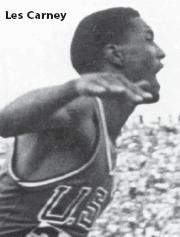

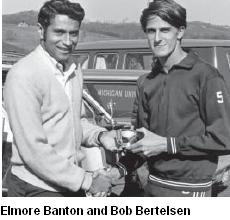

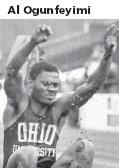

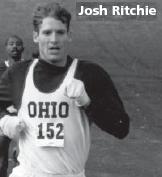
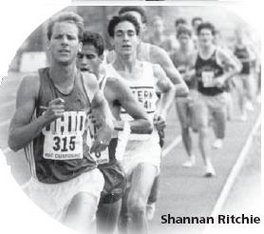

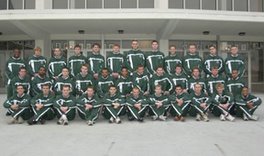


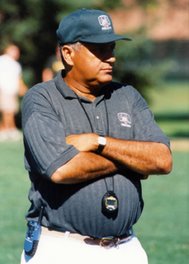




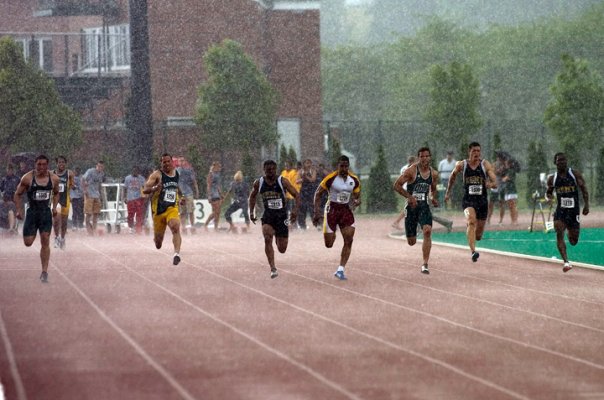
No comments:
Post a Comment